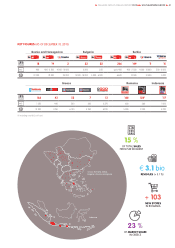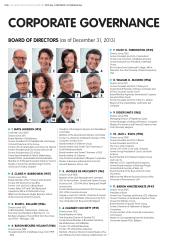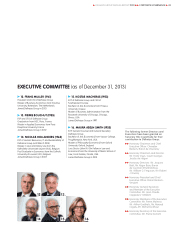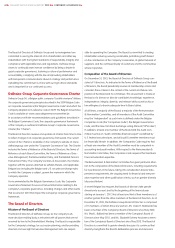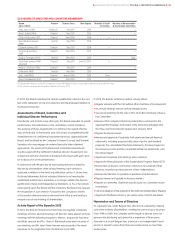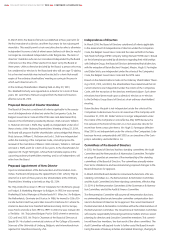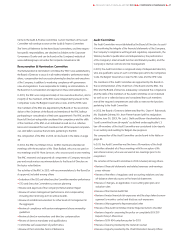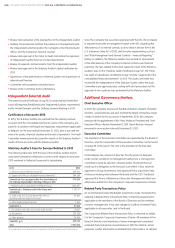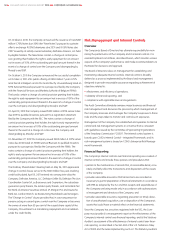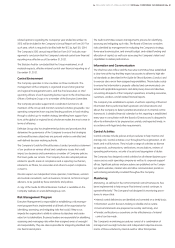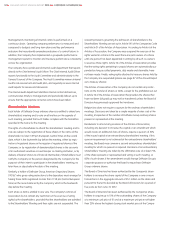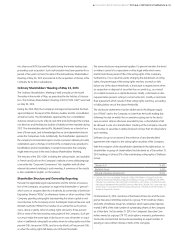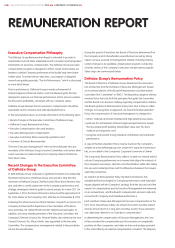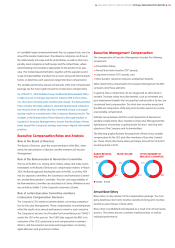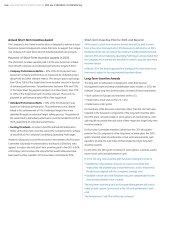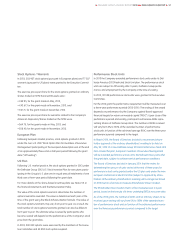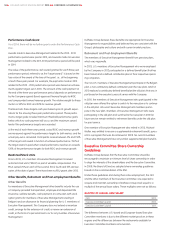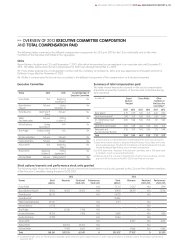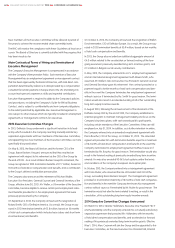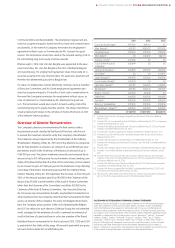Food Lion 2013 Annual Report Download - page 53
Download and view the complete annual report
Please find page 53 of the 2013 Food Lion annual report below. You can navigate through the pages in the report by either clicking on the pages listed below, or by using the keyword search tool below to find specific information within the annual report.
related opinions regarding the Company’s year ended December 31,
2013 will be included in the Company’s Annual Report on Form 20-F for
such year, which is required to be filed with the SEC by April 30, 2014.
The Company’s 2012 annual report filed on Form 20-F includes man-
agement’s conclusion that the Company’s internal control over financial
reporting was effective as of December 31, 2012.
The Statutory Auditor concluded that the Group maintained, in all
material respects, effective internal control over financial reporting as of
December 31, 2012.
Control Environment
The Company operates in nine countries on three continents. The
management of the Company is organized around strong banner
and regional management teams, and the chief executives or chief
operating officers of each operating banner report to the Chief Executive
Officer of Delhaize Group or to a member of the Executive Committee.
The Company provides support and coordination functions to all
members of the Group and monitors selected activities groupwide. Our
operating companies have acquired leading positions in food retailing
through a distinct go-to-market strategy, benefiting from support func-
tions at the global or regional level, whichever makes the most sense in
terms of efficiency.
Delhaize Group also has implemented policies and procedures that
determine the governance of the Company to ensure that strategies
and overall business objectives are pursued under a controlled and
well-defined decision-making authority.
The Company’s Guide for Ethical Business Conduct provides a statement
of our position on various ethical and compliance issues that could
impact our business and summarizes a number of Company policies
that must guide our actions. The Company has also adopted policies
related to specific areas of compliance and a reporting mechanism,
referred to as IShare, for associates and others to report compliance
concerns.
We also expect our independent store operators, franchisees, vendors
and outside consultants, such as business, financial, technical or legal
advisors, to be guided by these standards and policies.
A copy of the Guide for Ethical Business Conduct is available on the
Company website at: www.delhaizegroup.com.
Risk Management Program
Executive Management is responsible for establishing a risk manage-
ment program that is implemented at all levels of the organization for
identifying, assessing, and mitigating risks that could, if they occur,
impede the organization’s ability to achieve its objectives and create
value for its stakeholders. Business leaders are responsible for identifying,
assessing and managing risks within their assigned areas of oversight
and responsibility. They are also responsible for integrating identified risks
into their financial plans.
The Audit Committee reviews management’s process for identifying ,
assesing and mitigating such risks. The Board of Directors considers
risks identified by management in evaluating the Company’s strategy,
three-year business plan, and annual budget, and related funding and
allocation of capital, as well as in assessing the Company’s talent and
capabilities to deliver performance.
Information and Communication
The Chief Executive Officer and the Executive Committee have established
a clear tone at the top that they expect associates to adhere to high ethi-
cal standards as described in the Guide for Ethical Business Conduct, and
to exercise due care in their assigned responsibilities. This includes a duty
to ensure that information is properly collected and communicated, con-
sistent with applicable regulations and data privacy laws and directives,
concerning all aspects of the Company’s operations, including associates,
customers, vendors, and all related financial reports.
The Company has established a system of uniform reporting of financial
information that is performed both upstream and downstream and
allows the Company to detect potential anomalies in its internal control
framework. A detailed financial calendar for this reporting is established
every year in consultation with the Board of Directors and is designed to
allow for information to be prepared accurately, and reported timely, in
accordance with legal and other requirements.
Control Activities
Control activities include policies and procedures to help monitor and
manage risk. Control activities occur throughout the organization, at all
levels and in all functions. They include a range of activities as diverse
as approvals, authorizations, verifications, reconciliations, reviews of
operating performance, security of assets and segregation of duties.
The Company has designed control activities for all relevant business pro-
cesses across each operating company as well as its corporate support
offices. Significant policies and procedures are published on the Compa-
ny’s public websites, intranet sites and other communication portals as
well as being periodically circulated throughout the Company.
Monitoring
Monitoring, as defined in the COSO’s Internal Control Framework, has
been implemented to help ensure “that internal control continues to
operate effectively.” The Company had designed its monitoring proce-
dures to ensure that:
•
Internal control deficiencies are identified and corrected on a timely basis;
• Information used in decision-making is reliable and accurate;
• Financial statements are prepared accurately and timely; and
• Periodic certifications or assertions on the effectiveness of internal
control can be made.
The Company’s monitoring procedures consist of a combination of
management oversight activities and independent objective assess-
ments of those activities by internal audit or other third-parties.
DELHAIZE GROUP ANNUAL REPORT 2013 CORPORATE GOVERNANCE
51


